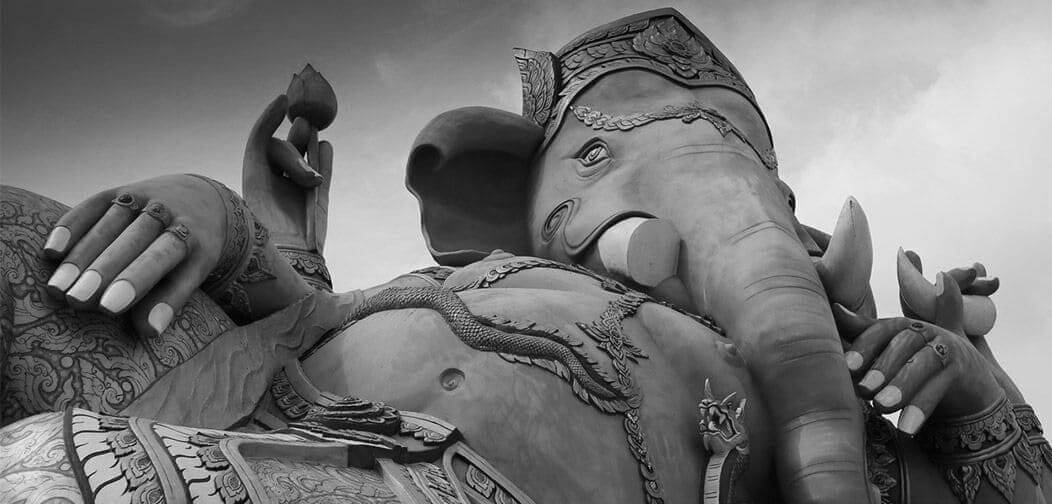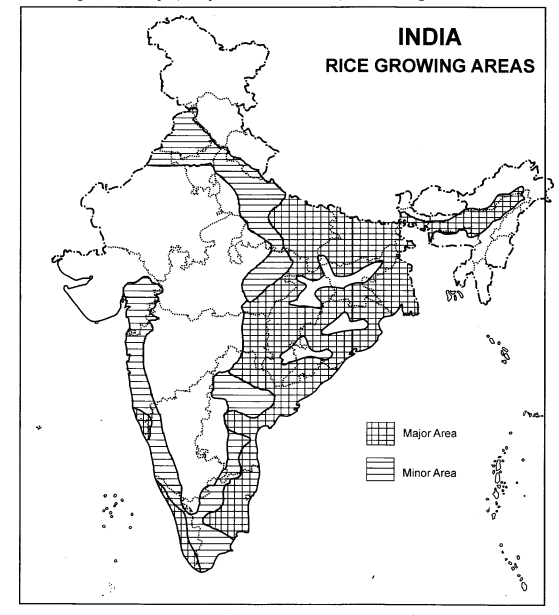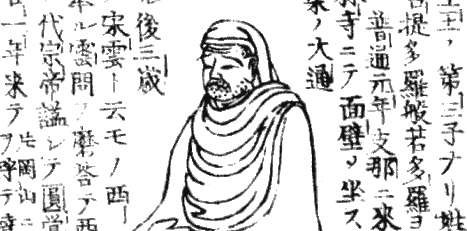There’s more to rice than you think- Discover rice in Indian folk tales. India has a long and varied history, and its people are of most diverse origin and of different religious traditions.
As might be expected, the folklore of India reflects this diversity of history and population. Several literary and religious collections of tales have been popular among the population for centuries.
Rice in Indian folk tales
Folk tales, like other genres of folklore of any society, reflect emotions, needs, conflicts and other aspects of human psyche that people acquire as a result of growing up in a specific culture. Folk tales are probably the most crystallized and apt expression of human thoughts. The study of folk tales prevalent in a society helps to understand the common universal elements on the one hand and certain characteristic traits specific to that society on the other. Most Indian myths, legends and folk tales have been derived from epic poems, like Mahabharata and Ramayana, as well as from the ancient Hindu Puranas and Buddhist Jataka tales.
This tale of Lord Ganesha and Kubera will teach you an important lesson in life
On being asked by Shiva and Parvati the purpose of the feast, Kubera fell short of words because he simply wanted to showcase his wealth.
Once, Kubera – the lord of wealth had decided to organize a feast by inviting all the Devas and Gods only to display the power of his wealth. All the invitees who were in his guest list had made their presence felt but Lord Shiva and his wife Parvati were missing.
Kubera thought that the purpose of organizing the feast would become meaningless if the most supreme couple doesn’t turn up. So he decided to visit their abode and personally invite them to attend his event.
On being asked by Shiva and Parvati the purpose of the feast, Kubera fell short of words because he simply wanted to showcase his wealth. The divine couple instantly realized that Kubera had no specific reason to organize the feast. They excused themselves from attending the party but comforted Kubera by saying that their son Ganesha would represent them.
Kubera was complacent as he believed that feeding Ganesha wouldn’t be a difficult task because a child wouldn’t eat much.
Unfortunately, to his horror, Kubera was stunned and shaken by Ganesha’s appetite. Ganesha kept on eating and this landed Kubera in trouble because his kitchen fell short of food soon.
In order to escape embarrassment, Kubera sent his staff to the neighboring villages to fetch some food for Ganesha. The wise son of Shiva and Maa Parvati had eaten everything that was offered to him but was still hungry. He asked for more food as Kubera stood helplessly.
He couldn’t even tell Ganesha that he had nothing more to offer. Moreover, it would have hurt his pride and ego. In order to save himself from the insult of not being worthy of feeding a little boy, Kubera reached out to Lord Shiva and Maa Parvati for help.
Knowing fully that Kubera’s pride was royally crushed by their son Ganesha, Lord Shiva handed over a fistful of rice to the God of wealth and asked him to feed their son. Kubera, who had realized his folly, gave the fistful of rice to Ganesha and after eating it the latter’s hunger got satisfied.
Thus, Ganesha made Kubera realize that no amount of wealth can satisfy one’s hunger if it is offered with pride and ego. If he had organized the feast with an intention of feeding people out of compassion and love, he could have won the blessings of all.
The tale of Ganesha and Kubera teaches us one of the basic principles of life. It teaches us to remain humble and grounded even after we become wealthy because wealth only defines our financial status in the society but not our character.

The Rajah’s Rice: A Mathematical Folktale from India
In “The Rajah’s Rice: A Mathematical Folktale from India” , [By Barry David ] by offering her the most costly jewels in his kingdom as a reward for curing his sick elephants, the raja is only too happy when young Chandra asks for one grain of rice, to be doubled for each square that is upon a chessboard. Her choice saves her village and cures the raja of his greed, all the while teaching students the concept of geometric progression.
It was assumed that all rajas were wise and fair. He owned some land on which people cultivated rice.
One day, he declared “Most of the rice must be given to me to be stored in the royal storehouse in case of hunger.”
The raja wanted to show that he was a wise man caring for people. So every year people were giving most of their rice to raja.
However, one year the rice grew badly and people didn’t have any rice to eat. They sure counted on raja to help them as it was promised.
Unfortunately, the raja turned to be selfish and decided to keep all the rice. Since he didn’t know how long the famine would last, he couldn’t risk going hungry. So he had to keep all the rice for himself.
“Your highness” the ministers begged the raja “People are hungry and you promised to protect them.”
“No” shouted the raja “It doesn’t matter what I promised. I am more important than my people. I cannot go hungry.”
As people were growing more and more hungry, this didn’t stop the raja from a feast for himself. On the day of the feast, a basket of rice was taken from the storage. The basket had a small whole letting some rice on the ground.
A village girl noticed it and quickly spread her skirt collecting the fallen rice. She brought it to the raja as it was his. In return the raja decided to reward the girl for her good deed and asked her “What would you like to receive?”
“One grain of rice” answered the girl.
The surprised raja said “I am a raja and I can reward you more than one grain.”
“As you wish” replied the girl
“You may give me twice as much tomorrow and twice as much the following day and so on for the whole month.” The girl turned out to be much smarter than the raja. As the result of her calculations, she was getting more and more rice with every day. Toward the end of the month, the raja’s storage was getting empty.
This was a great lesson for the raja, who learned to be wise and fair, as a raja should be.
How the big rice grains got small
In the days when the earth was young and all things were better than they now are, when men and women were stronger and of greater beauty, and the fruit of the trees was larger and sweeter than that which we now eat, rice, the food of the people, was of larger grain.
One grain was all a man could eat; and in those early days, such, too, was the merit of the people, they never had to toil gathering the rice, for, when ripe, it fell from the stalks and rolled into the villages, even unto the granaries.
And upon a year when the rice was larger and more plentiful than ever before, a widow said to her daughter
“Our granaries are too small. We will pull them down and build them larger.”
When the old granaries were pulled down and the new one not yet ready for use, the rice was ripe in the fields. Great haste was made, but the rice came rolling in where the work was going on, and the widow, angered, struck a grain and cried,
“Could you not wait in the fields until we were ready? You should not bother us now when you are not wanted.”
The rice broke into thousands of pieces and said “From this time forth, we will wait in the fields until we are wanted,”
and from that time the rice has been of small grain, and the people of the earth must gather it into the granary from the fields.
Origin Myth: Bawan Ganga
Once there was a poor low-caste man who eked out his living by hiring himself out as a field-labourer and by rearing pigs. The man had a daughter whose duty it was to drive pigs to the field. While grazing pigs one day on the full moon of an important festival, the girl saw a young Brahmin hurrying by.
She was curious why he was almost running and asked him the reason. The Brahmin replied that he wanted to reach the river Ganges and bathe at the time of the full moon.
The girl smiled and told him that he could not possibly reach the river Ganges in time, as the river was far away, but that she could solve his problem. The Brahmin wanted to know what she had in mind. The girl pointed to a dirty pool where her pigs were wallowing and told him that if he had real faith in his heart and if he had complete trust in her, he should dip into the pool, and she would bring about the exact auspicious moment of the full moon, and he, in turn, would earn all the merit of bathing in the Ganges.
The Brahmin dived into the pool and found the bottom full of jewels and brought out a handful of them. The girl wanted him to dive again and he did so once more. This time he found mud at the bottom. The girl then told him that he had got the reward he deserved for the implicit faith in his mind and his confidence in her.
The astonished Brahmin was very attracted to the girl and proposed marriage. The girl blushed, but smilingly said that she could not marry without her father’s consent.
The Brahmin youth approached the father but the father did not wish to accept a high caste man. The young Brahmin was heart-broken at the refusal and threatened to commit suicide. The father was frightened of being responsible for the death of a Brahmin and reluctantly gave his consent. The marriage was duly performed. When the bride and groom were taking their leave, the father wanted to give a dowry.
The girl told her husband secretly that he should only ask for a particular cow, a particular pig and a particular parrot. The poor man was taken aback at the son-in-law’s request, but was obliged to grant the gifts asked for. The bridegroom and the bride left the village.
The parrot was not an ordinary bird. It had access to Lord Indra’s court and visited it every day, bringing its mistress news of happenings in the court. The pig was the leader of all the pigs in the country; the cow was a «Suravi» or the auspicious cow that yields plenty.
The Brahmin boy and his wife lived very happily. One day the parrot brought the girl news that Indra had decided that in the approaching rain season there would be no rain anywhere in the districts except for on the barren hills and valleys of Rajgir.
Everywhere else there would be famine. Hearing the news, the girl asked her pig to dig up the entire barren hillside and valleys with its herd of swine, which it also did. Then she asked the Suravi Cow to manure the fields, and that was also done. Then the girl asked her husband to sow rice in the dug-up area. The Brahmin husband was very puzzled but did as his wife requested.
After some time it rained and that particular area was congested with rice. The couple supplied food to the other areas where the harvest had failed.
Indra was perturbed that his plan to bring about a famine had been thwarted. He ordered an army of rats to destroy the crops. The parrot smuggled the news out to its mistress, and the Brahmin husband procured an army of cats to guard the crop and the rats fled.
Indra was furious and ordered a storm to be raised when paddy was being cut and stored on the threshing floor, the idea being that the grain would thus be blown away. Again the parrot brought the news and the girl advised her husband to dig a deep moat round the wall at the foot of the hill. This was done.
The storm came but the paddy remained safe in the trench. This way the country was saved from famine because of the virtues, cleverness, and also resourcefulness of the girl.
The moat is still there. The pool in the southern defile of the south gate of the hill-girt Rajgir, where the pigs used to wallow, was named Bawan Ganga, or the Fifty-Two Ganges.
Bawan Ganga is a water-pool near Rajgir in Nalanda District and is associated with a folk-tale fondly recited by the people of Rajgir area. Rajgir, with its ancient relics, has been the seat of many kings and saints. The place, associated closely with Buddhism and Jainism, is picturesque and attracts many visitors.
The two friends
Once there were two close friends who both possessed supernatural powers. One could judge the quality of rice and the other the personalities of men. Both of them started a long journey to see the world. They passed many small villages and then came to a large village which was the seat of the Raja, went to the Raja’s court and were hospitably received, asked to stay as guests.
But when rice was served, the man who could judge its quality refused to eat. The other man refused to eat vegetables. The Raja was informed and, as the usual custom is, wanted to have their food. They said they had reasons for refusing the food. The Raja asked them, “Please, tell me why you refuse”.
Thereupon the first man said, “Oh, Raja Saheb, the paddy of which the rice was served to me was grown on a piece of land which was once a burning ghat. I can smell the ashes of the burnt bodies and wood.”
The Raja then turned to the other man and asked him why he was refusing to take the vegetables and told him that his own daughter had cooked them. The second man replied,
“Oh’ Raja, I am very sorry if I am rude. But your daughter’s breath has wafted to the vegetables. The food has a strong smell of goat’s milk. I think that as a child your daughter was nursed on goat’s milk.” The Raja at once sent for the Rani to find out the truth.
The man sent out earlier returned and told the Raja that about thirty years ago there was a patch of land used for burning corpses. Paddy had been growing there since and the rice given was of the paddy grown there. The Rani, too, confirmed that as she had not had sufficient milk she had nursed his daughter with goat’s milk.
Perceiving that both of his visitors were right and had supernatural powers, the Raja persuaded them to stay in his court. The two friends accepted the proposal and from then on lived in the Raja’s court.
This story is quite bizarre and could be classified under the category of possessing supernatural skills.
If today anyone were to claim to possess such powers, he would not be taken seriously. People, however, tend to accept the information contained in folk tales as being true.
~ ○ ~
Works Cited & Multimedia Sources
- INDONESIA: FOLK TALES ON RICE
- CHINA : FOLK TALES ON RICE 稻
- THE MOTHER GODDESS OF FERTILITY AND RICE
- TIMELINE: The story of rice
- MALAYSIA: The Rice Soul- Myths, History and Folklore of RICE Beras or Nasi
- MALAYSIA: Proverbs and wise sayings in relation to RICE Beras or Nasi
- CHINA: Proverbs and wise sayings in relation to RICE 稻
- CHINA: On the origin of Rice 稻 – Myths, History and Folklore
- THAILAND: Mae Posop- Myths, History and Folklore of RICE
- THAILAND: Proverbs and wise sayings in relation to RICE K̄ĥāw
- INDIA: Proverbs and wise sayings in relation to RICE Chaaval
- INDIA: RICE dishes Khichri, Byriani, Kheer, Dosa & Idlly
- INDONESIA: Myths, History and Folklore of RICE Nasi
- INDIA: Myths, History and Folklore of RICE
- BALI- INDONESIA: Myths, History and Folklore of RICE Nasi
- Alexander Rachel. The Significance of Rice in Hindu Ceremonies. http://classroom.synonym.com/significance-rice-hindu-ceremonies-6681.html
- Conception and Evolution of The Mother Goddess in India. 2004. http://www.exoticindiaart.com/m/article/mother/
- Dutt Sharma Ramesh. The Story of Rice. 1991.
- E.D. Gajalakshmi – Myths and Legends. 2010. https://sathyasaimemories.wordpress.com/2010/01/10/gajalakshmi-steady-wisdom-two/
- Eva March Tappan, ed., The World’s Story: A History of the World in Story, Song and Art, (Boston: Houghton Mifflin, 1914), Vol. II: India, Persia, Mesopotamia, and Palestine, pp. 67-79. From Internet Indian History Sourcebook
- Goswami Asha. Mother Goddess, in: IST Economic Times in The Speaking Tree. 2017. https://blogs.economictimes.indiatimes.com/the-speaking-tree/mother-goddess/
- History of rice cultivation in India. https://web.archive.org/web/20111127163044/http://www.rice-trade.com:80/origin-history-of-rice.html
- Lakshmi Puja. Wikipedia. https://en.wikipedia.org/wiki/Lakshmi_Puja
- Madhulika Dash. The many faces of Kheer: Think the famous rice pudding is an Indian invention? You will be surprised! 2014. http://indianexpress.com/article/lifestyle/food-wine/the-many-faces-of-kheer-think-the-famous-rice-pudding-is-an-indian-invention-you-will-be-surprised/
- Minhas Salman S. Basmati – The King of Rice. 2006. http://www.the-south-asian.com/january2006/Basmati_the_king_of_rice_3.htm
- Mitu De. Folk Rice Varieties and Cultural Heritage. The Beats of Natural Sciences Issue 1 (March)Vol. 1 (2014).
- Mohanty Bidyut. Goddess Laksmi and Cultural Traditions of Rice: Implications for the Status of Women, in: 21st Century Global Dinamics. 2011. http://www.21global.ucsb.edu/global-e/august-2011/goddess-laksmi-and-cultural-traditions-rice-implications-status-women
- Odisha. Jhoti: Traditional folk art of Orissa. 2017. http://www.abhijna-emuseum.com/weekly/jhoti-traditional-folk-art-orissa/
- Pattanaik Devdutt. On Durga Puja, let’s not forget the glory of Odisha’s Gosani jatra. Battle of Lakshmi and Saraswati. The rise of Kali. LAKSHMI, the Goddess of Wealth and Fortune – an Introduction. The Creatrix. Born of Brahma’s hair. http://devdutt.com
- Rice as a Superfood. Encyclopedia of Food and Culture. . Encyclopedia.com. (January 14, 2018). http://www.encyclopedia.com/food/encyclopedias-almanacs-transcripts-and-maps/rice-superfood
- Rice: The Grain That Shapes Cultures, Traditions and Rituals. www.asiarice.org
- Sahay Sarita. The folk tales of Bihar: An anthropological perspective .https://www.folklore.ee/folklore/vol13/bihar.htm
- Subhamoy Das. Legend of Rice. 2017.
- The ancient story of goddess Lakshmi—bestower of power, wealth and sovereignty. Excerpted from Vakils, Feffer & Simons from the book Lakshmi: The Goddess of Wealth and Fortune – An Introduction authored by Devdutt Pattanaik. https://qz.com/545655/the-ancient-story-of-goddess-lakshmi-bestower-of-power-wealth-and-sovereignty/
- The Pongal festival. http://www.pongalfestival.org/pongal-festival.html
- DISCOVER RICE IN INDIAN FOLK TALES AND LEGENDS- One Grain of Rice, Indian Folktale. 2012.https://geowonderland.blogspot.co.id/2012/04/one-grain-of-rice-india.html
Keep exploring:



